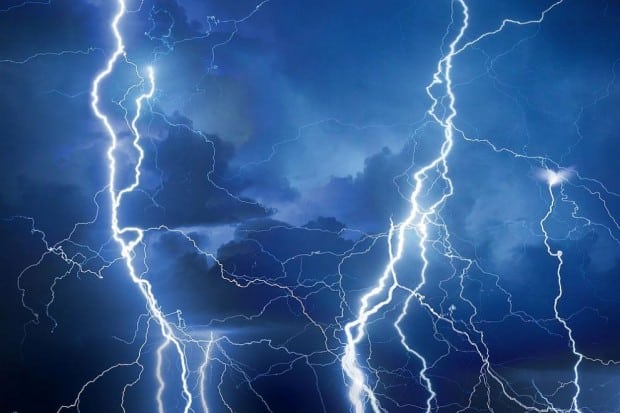Whether we are outdoors or in the woods, a thunderstorm is a dangerous phenomenon.
The Lightning Protection Handbook:
In open space:
Avoid open space. If you are on a peak or ridge, go down as quickly as possible;
– Turn off all electrical devices. They attract even more electrical activity. If possible, remove the batteries as well;
– Find a safe and dry place. A thunderstorm usually ends in about an hour—enough time to seriously wet the Earth’s surface;
– Try to find a rock ledge, a cave or even a tent in a dry place;
– Watch out for the caves. Although caves can keep you dry, they come with their own dangers. In the event that lightning strikes your cave, stand at least one meter from the walls and three meters from the ceiling;
– Isolate yourself from the ground! Place a scarf or other soft object under your feet.
Thus you will be protected from the flow of electricity on the earth’s surface if lightning strikes near you. Keep in mind that electricity can still pass through the insulation you put in place.
– Whether you are out in the open or in a sheltered place, assume the following position: crouch, bend your head and cover your ears with your hands, and keep your feet together.
In the forest:
– Thunderstorms in the forest are more insidious as you are surrounded by more potential targets.
– If you are with a group take a quick count – especially if lightning strikes near you. Don’t wait for a response if someone in your group is some distance away from you – get to them as quickly as possible. They may need immediate help;
– Avoid tall and lonely trees! They are also a lightning magnet. Some hikers like to shelter under lone trees – a big mistake to avoid.
– Avoid the water! Water is a good electrical conductor. So if lightning strikes, the electric current will spread across the surface in all directions. If you are near water there is also a high chance that the electricity will reach you. So stay away from lakes, springs and even puddles.
– Be careful with the metal parts of the equipment! Experienced climbers keep all metal objects away from the shelter. A safe distance is about 50 meters;
– Extinguish the fire (if any). The smoke plume is an ionized gas that can conduct electricity;
– Latent lightning hazard:
Lightning is dangerous, but even if you avoid a direct strike, that doesn’t mean you’re out of danger. Electromagnetic induction can still harm you if the strike is a meter away or less – meaning that if lightning strikes close enough, the current can still go through your body.









